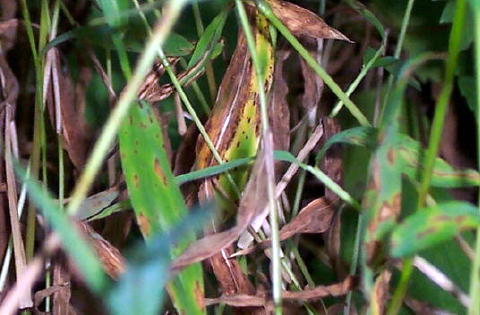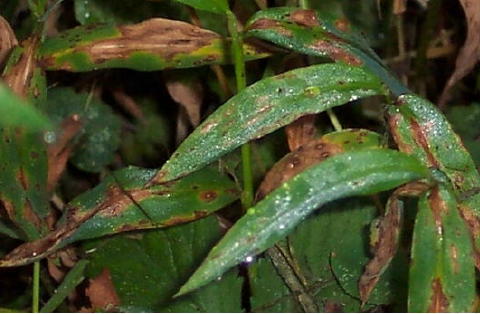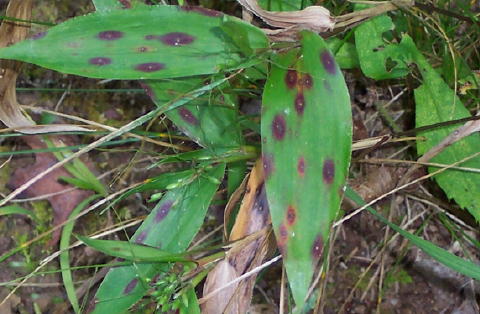
Dying Japanese Stiltgrass, Microstegium vimineum, infected with
a fungus disease has become a common site in Calhoun County
woodlands and along some roadsides during the past couple months
By Russ Richardson
The disease killing Japanese stiltgrass has now been identified by research labs at West Virginia University, Indiana University and University of Maryland to belong to the genus of fungus called Bipolaris.
Bipolaris fungus is a type of organism that grows in grassy plants that produce a thatch and it is said to persist in the thatch once it becomes established. Some species of Bipolaris fungus are been being studied for potential use as biocontrol agents in other invasive plant species but there are also significant concerns because of Bipolaris' relationship to some extremely serious diseases of certain food crops.
Japanese stiltgrass plants infected with the disease have been observed throughout Calhoun and Roane Counties as well as in parts of Gilmer. In many areas where the disease was worst, the stiltgrass died before producing seed this year.
Japanese stiltgrass has been in the US since 1919 and no diseases or major health problems have ever been observed in the plants and the disease outbreak documented in central West Virginia in 2009 is the first time the pathogen involved with any disease in Japanese stiltgrass has been identified.

The purple spots on the blades and stems and withered
leaves of the stiltgrass plants are signs of the disease
At this point there are many questions about the newly identified fungus disease in stiltgrass and the impact it might have on other plants. In some locations where the stiltgrass plants did not die before seed started to set, the fungus appears to have infected the seeds. Over the coming winter it is likely that many scientists will be studying both healthy and diseased stiltgrass seeds in an attempt to learn more.
In the next few weeks the first scientific research paper detailing the initial description of the Bipolaris fungus disease in Japanese stiltgrass is going to be published in a professional journal.

Many species of local plants exhibited disease symptoms
similar to those observed in dying Japanese stiltgrass
Now that local Japanese stiltgrass has pretty much all gone to seed for the 2009 growing season we will have to wait until next year to see if the disease will reappear and cause more damage to one of the ten most destructive invasive plants in the eastern US.
| 


